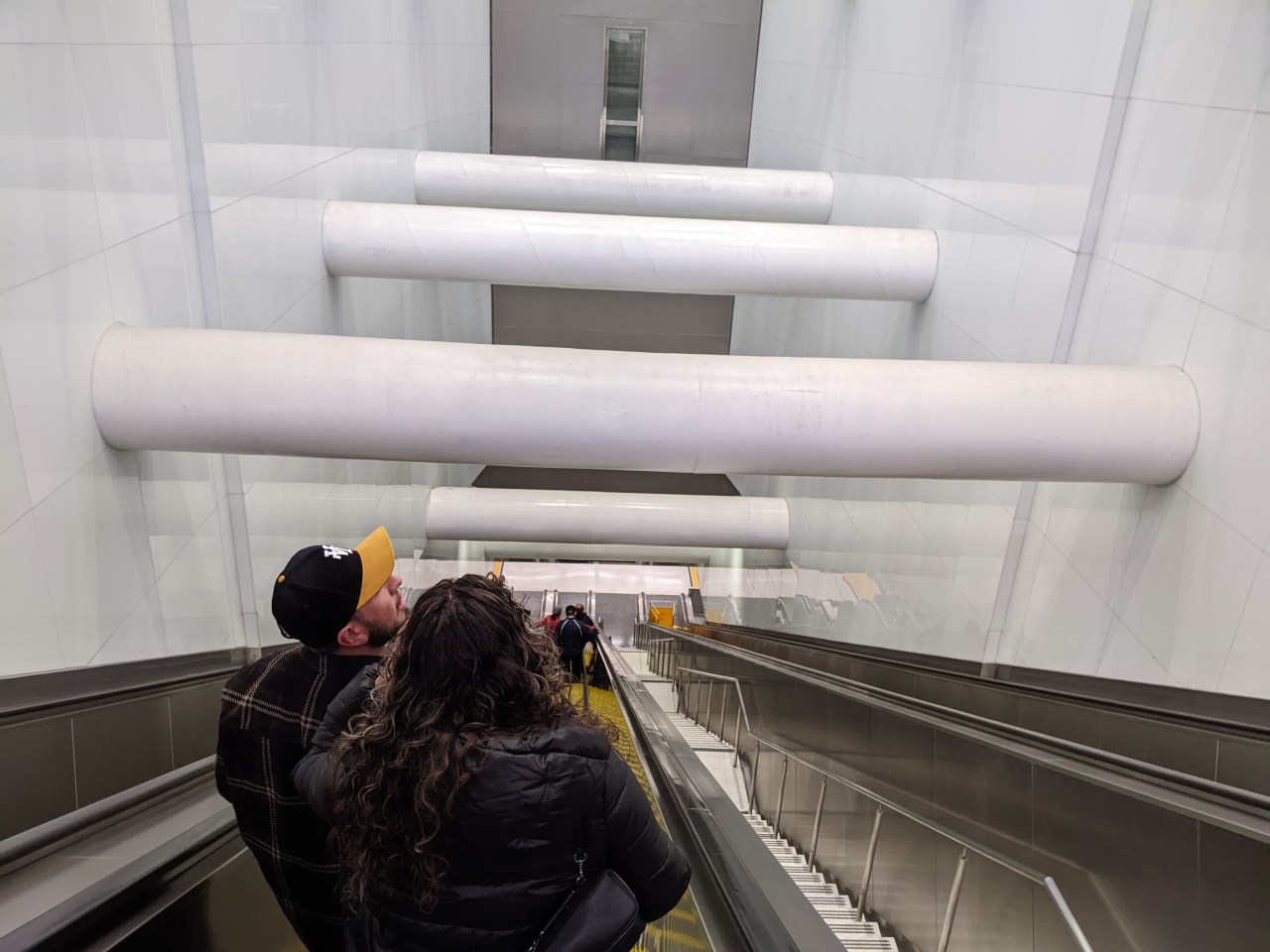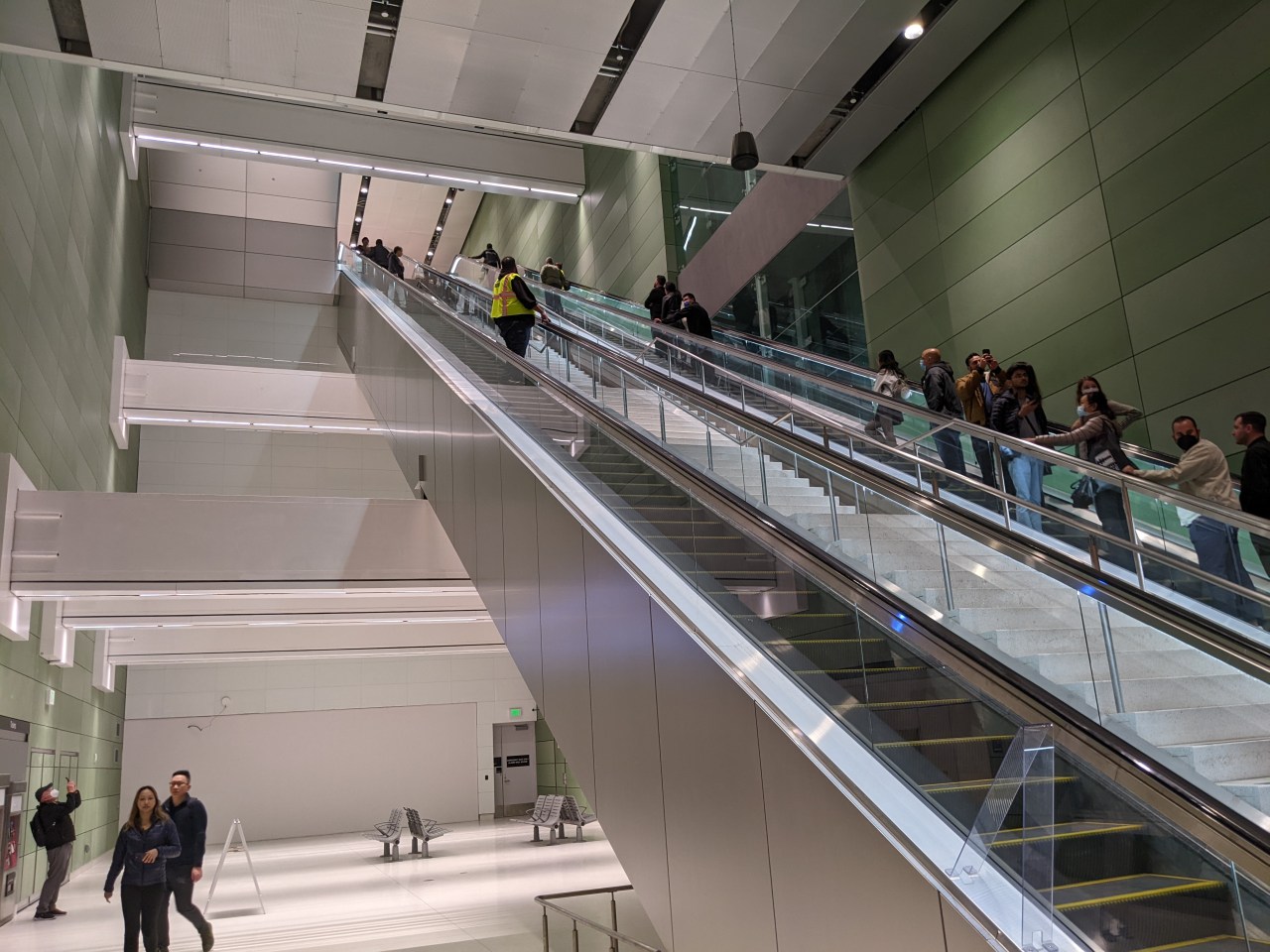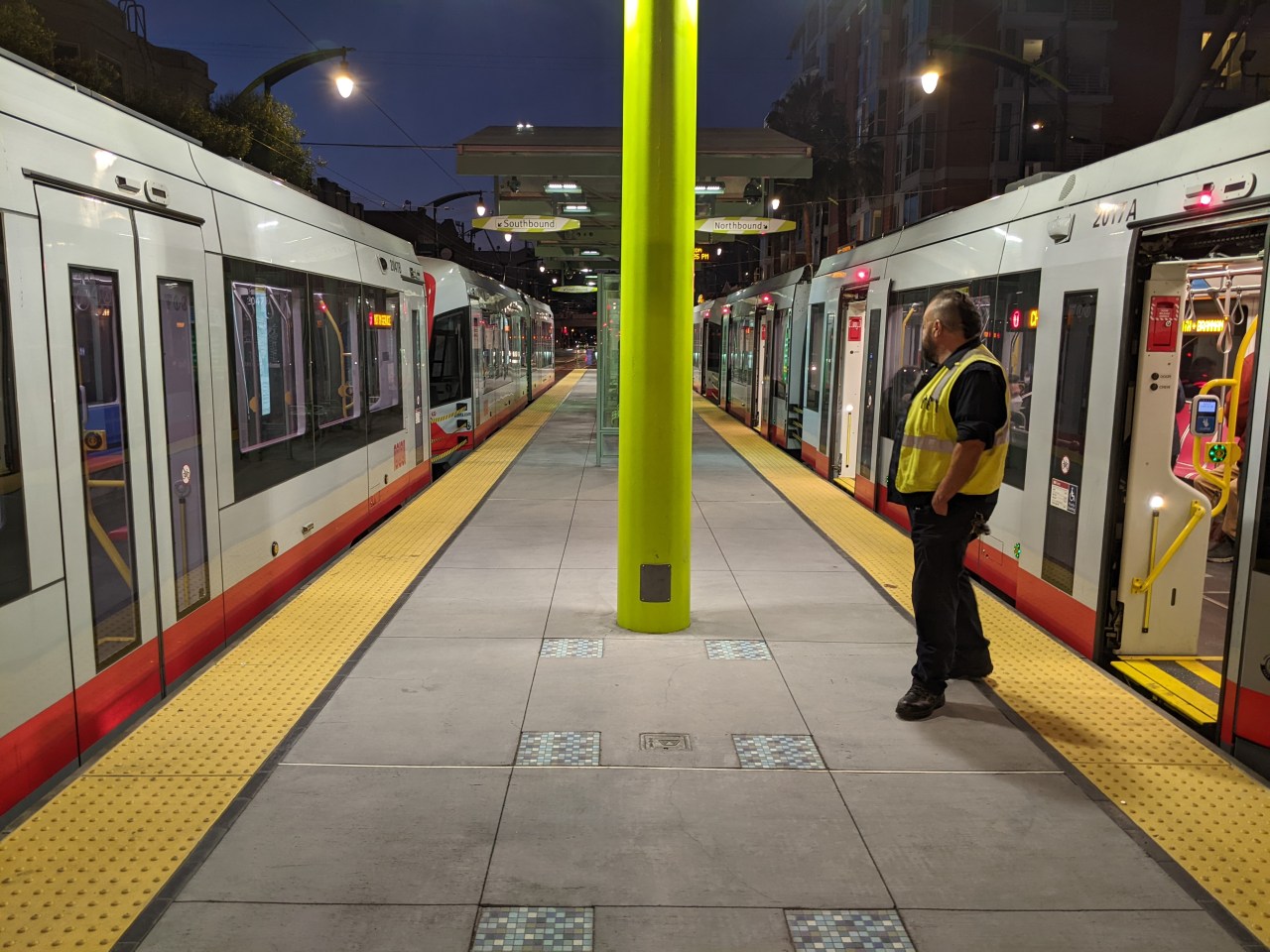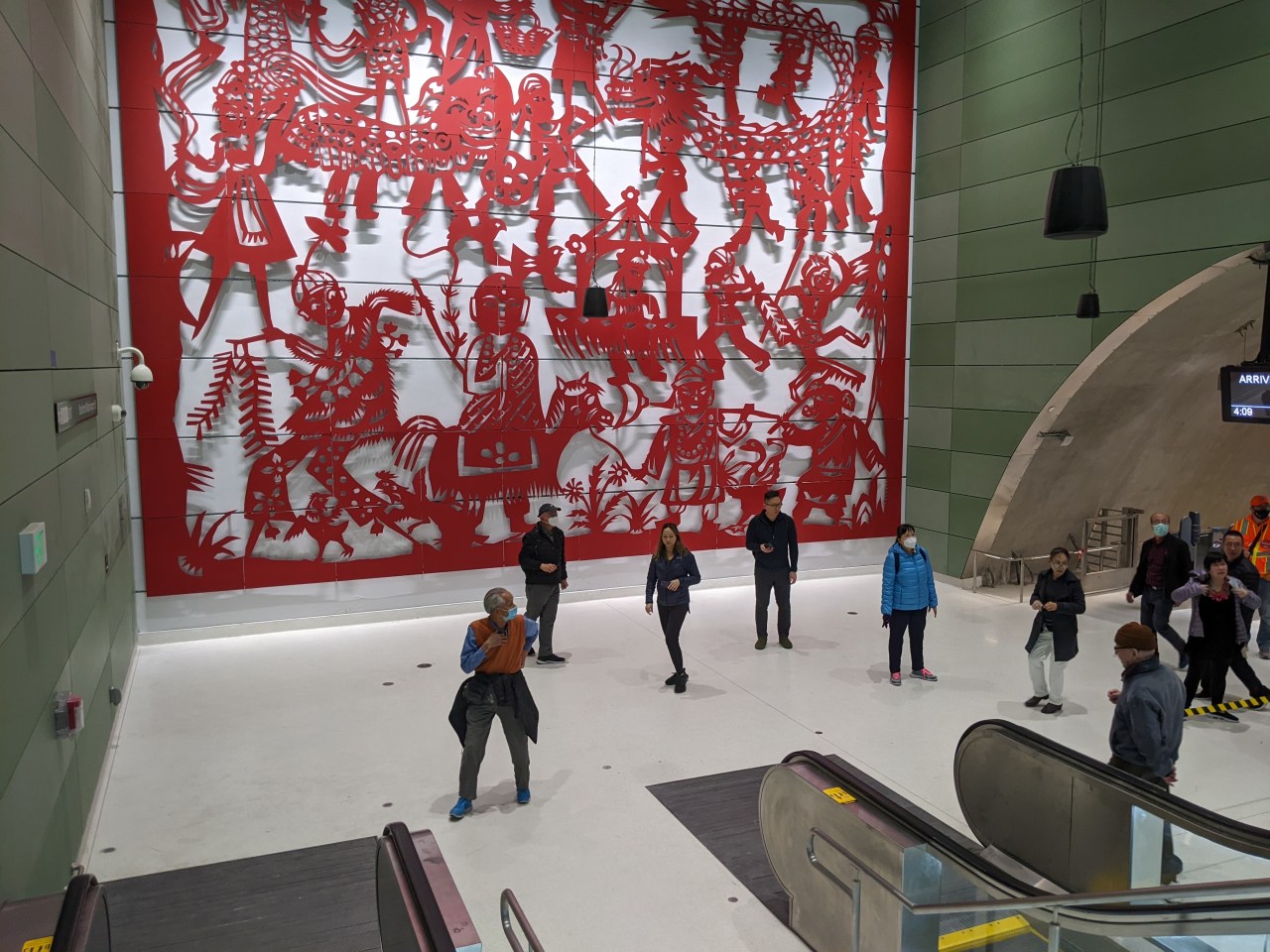Note: GJEL Accident Attorneys regularly sponsors coverage on Streetsblog San Francisco and Streetsblog California. Unless noted in the story, GJEL Accident Attorneys is not consulted for the content or editorial direction of the sponsored content.
The Central Subway, at least from Chinatown to 4th & Brannan, opened this weekend offering free, preview rides. From KQED's coverage:
SFMTA's Central Subway Project was always expected to be a complex and difficult undertaking, going underneath the Union Square area and Chinatown — not only one of the densest parts of the city, but one of the densest residential areas in the entire U.S.
Those expectations proved to be well-founded. The project ended up costing $2 billion and went significantly over budget due to various construction delays. All in all, it was completed four years later than planned.
For now, during this "soft opening" period, trains will only run on weekends. "On January 7, T Third Metro service will begin from Sunnydale to Chinatown via Central Subway, seven days a week, giving customers a direct connection from Bayview, Visitacion Valley and nearby neighborhoods to SoMa, Union Square and Chinatown," explained SFMTA in its release.
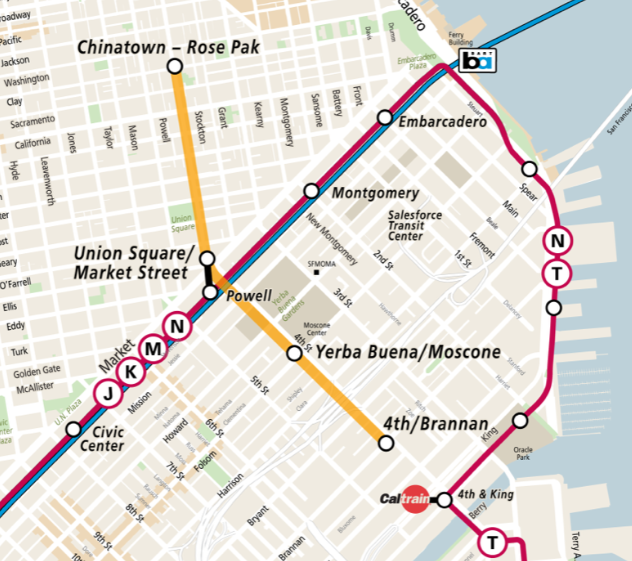
Of course, this is a big enough project that the mainstream press was all over it. Check out more coverage in the Chronicle, and at SF Bay.
Streetsblog, however, wants to hear from readers to get their impressions of this long-awaited project. Here's a few of mine:
- The wayfinding/passageway from the existing Powell Street BART and Muni station is excellent. Transit designers have certainly learned a thing or two about lighting--the proliferation of LED lights has certainly helped--and making underground spaces inviting. The challenge now is will they be able to keep this pedestrian tunnel (below), as well as other spaces in the system, looking bright and clean over time.
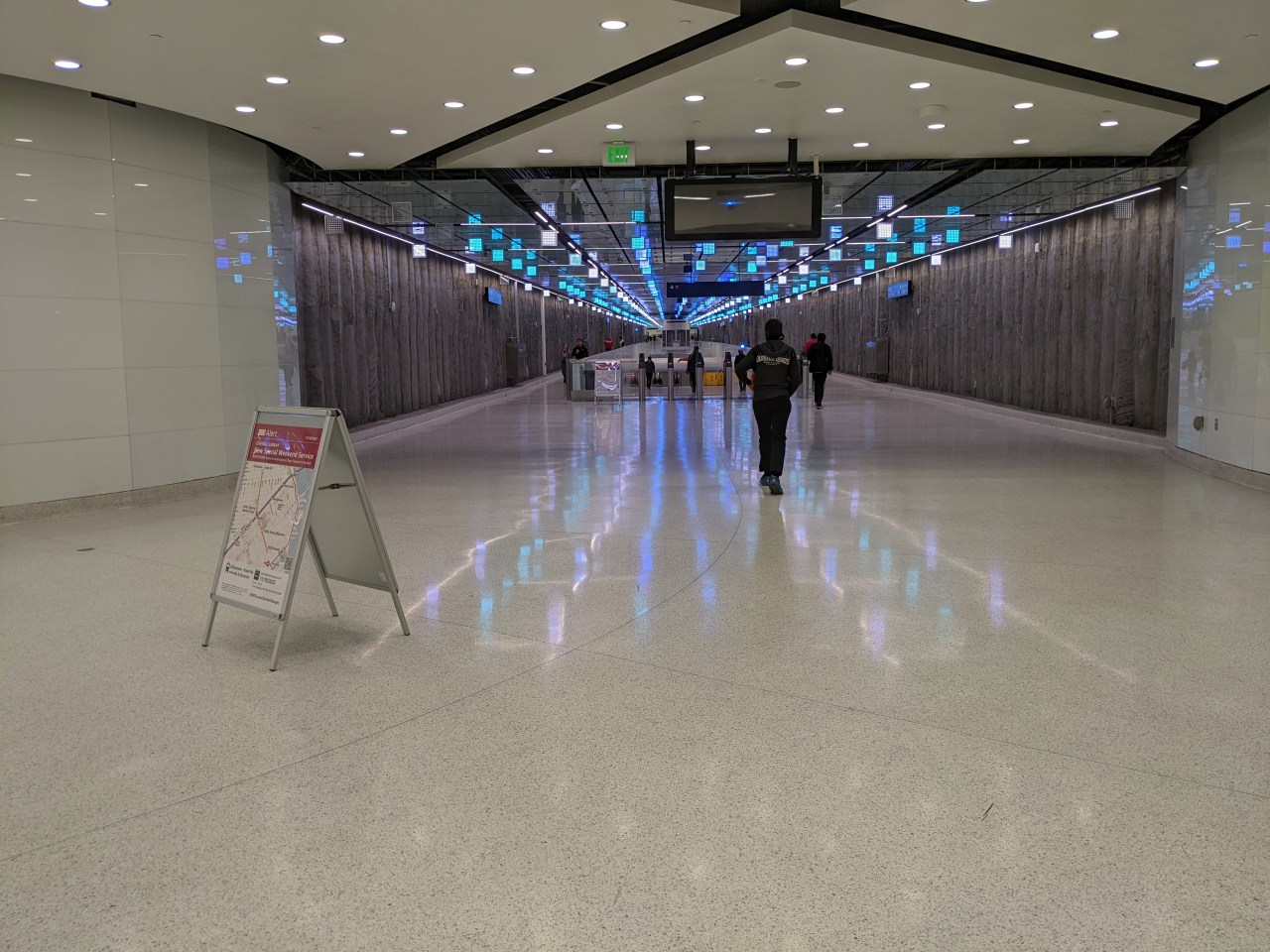
- The Central Subway, of course, gets you to one of the most walkable neighborhoods in the city. Chalk it up to teething, but I only got one stop on my initial ride--from Powell to Chinatown. My plan was to then reverse and go to 4th and Brannan, but an errant fire alarm ended up closing the system. But it's Chinatown, with its narrow streets and with so many shops and restaurants right by the station, and it's easy to kill an hour.
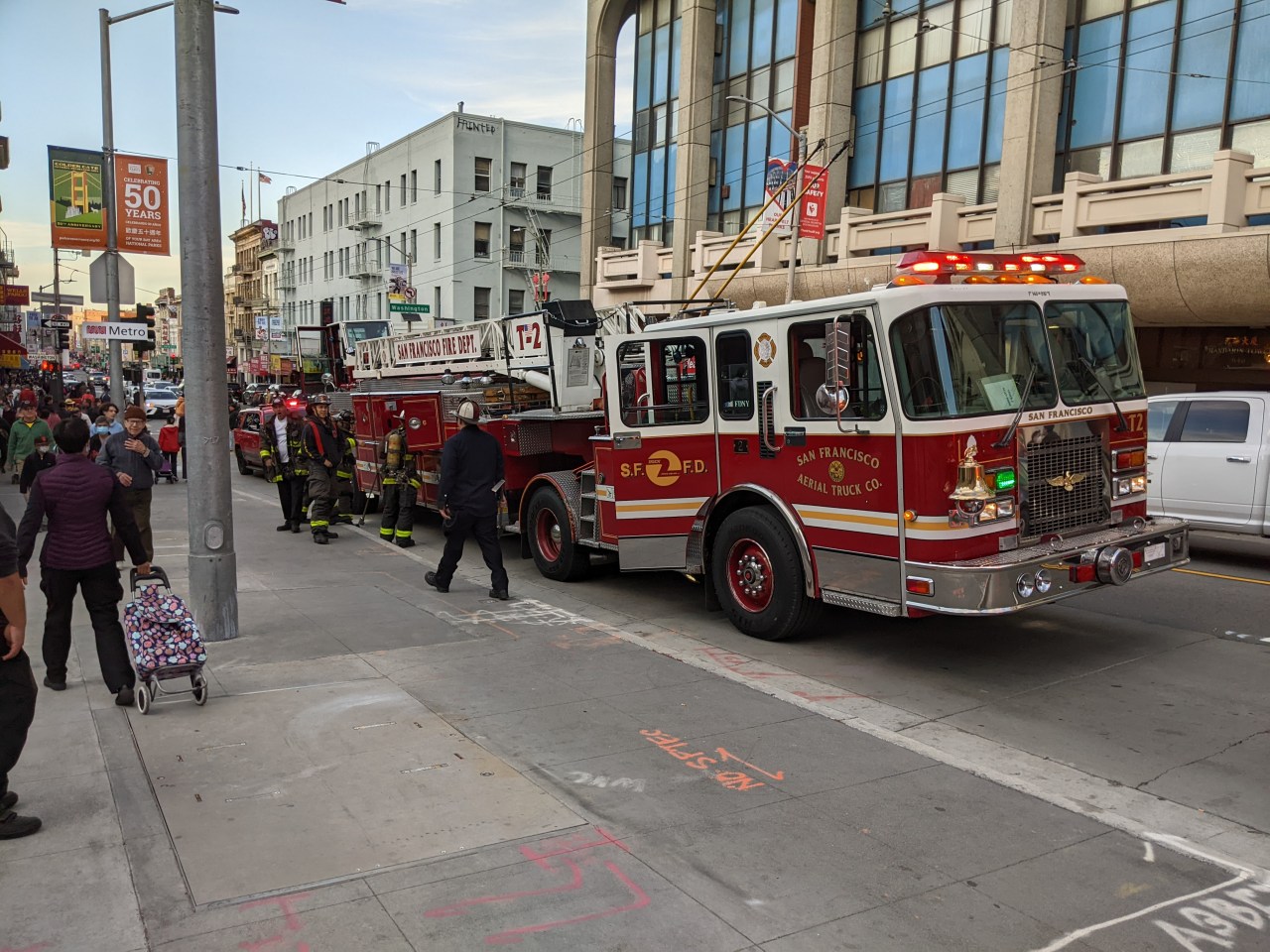
So I had a delicious dinner instead of riding right back. No biggie.

This, to me, underscores the important historic connection between transit and commerce. The server in the restaurant where I ate said this weekend was great for business, specifically because the train was bringing more patrons. That's how it's supposed to work and it's why nearly all historic, walkable corridors in American cities were once built around trolley lines (even in far-flung suburbs).
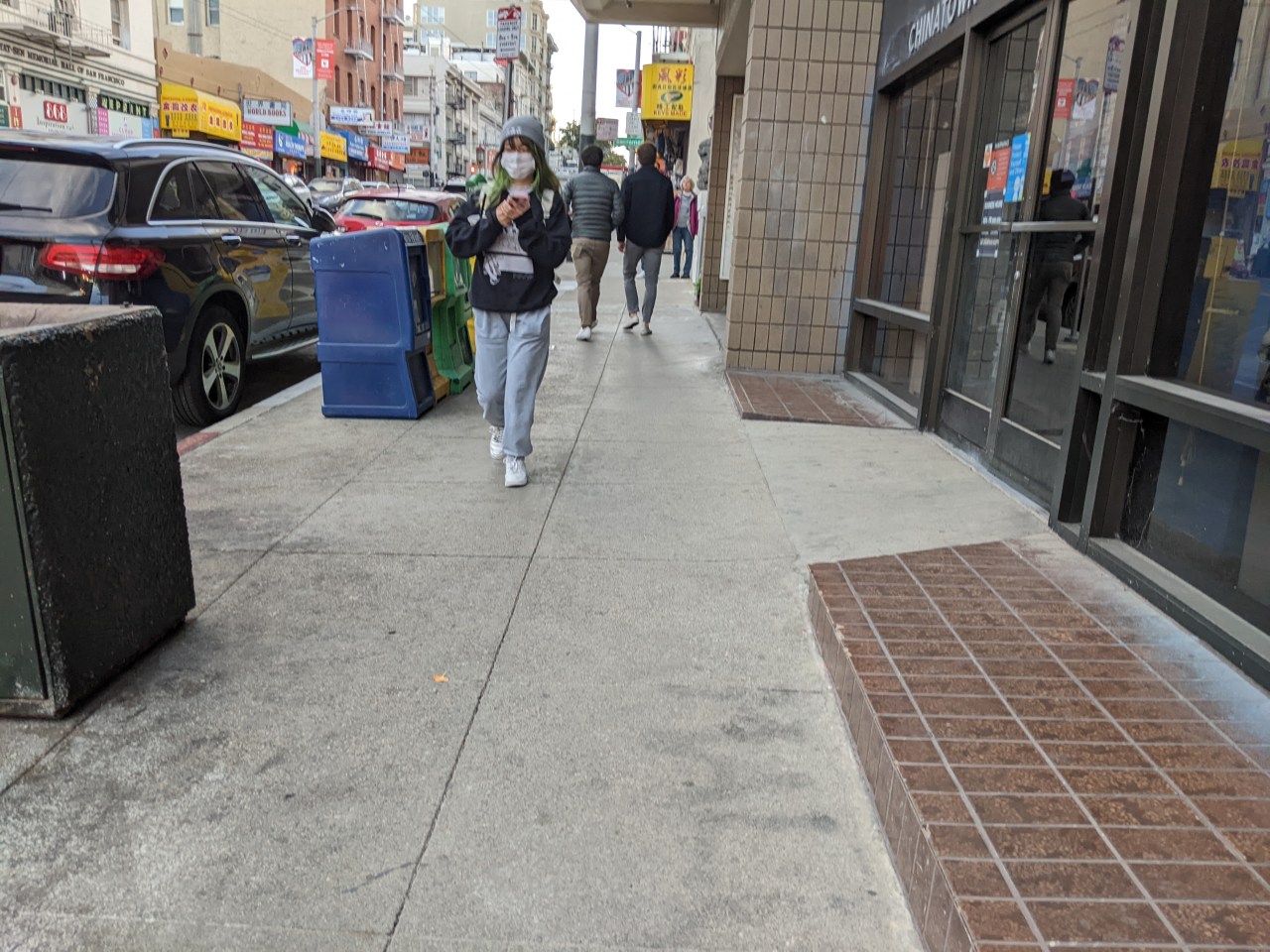
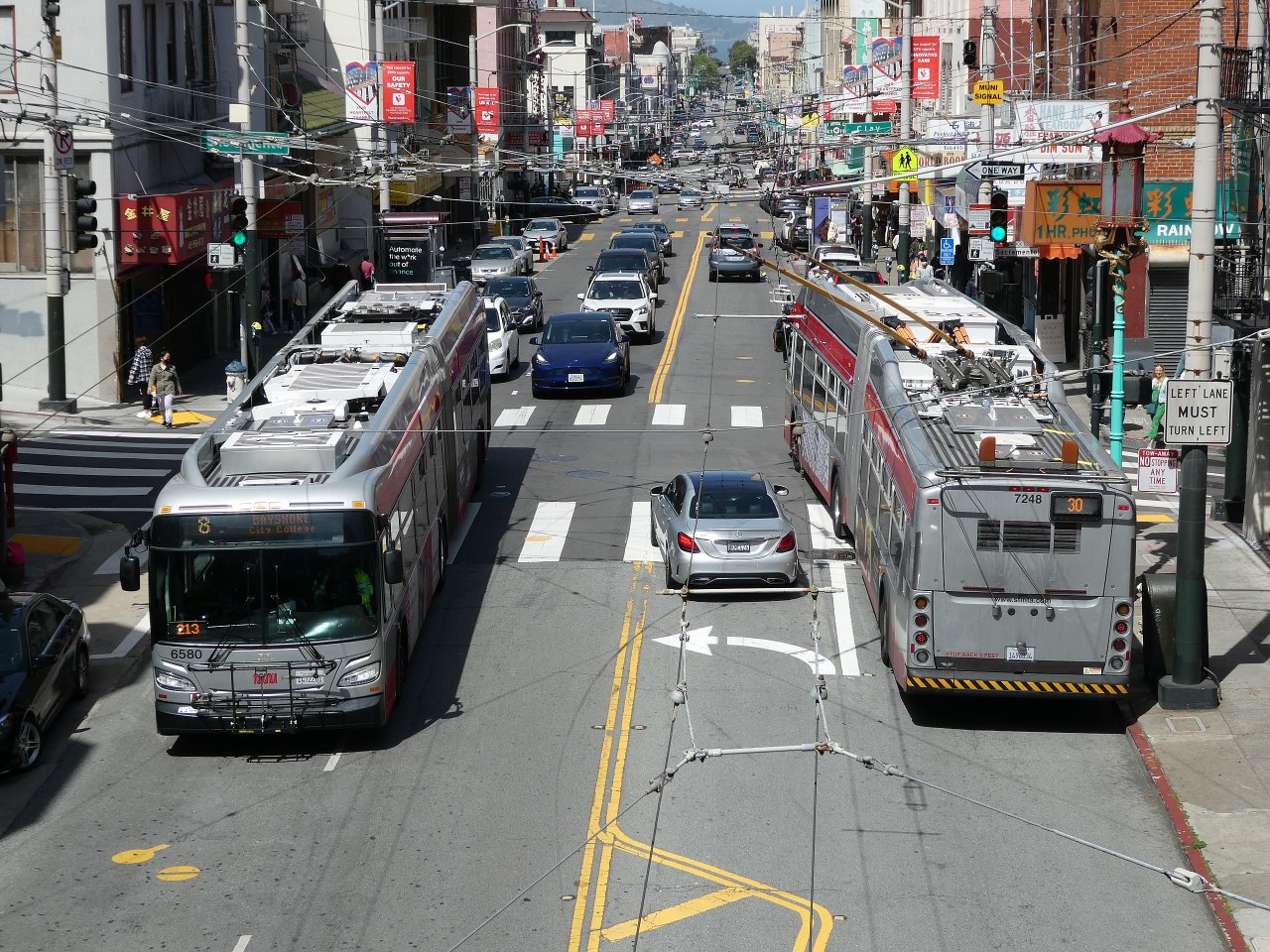
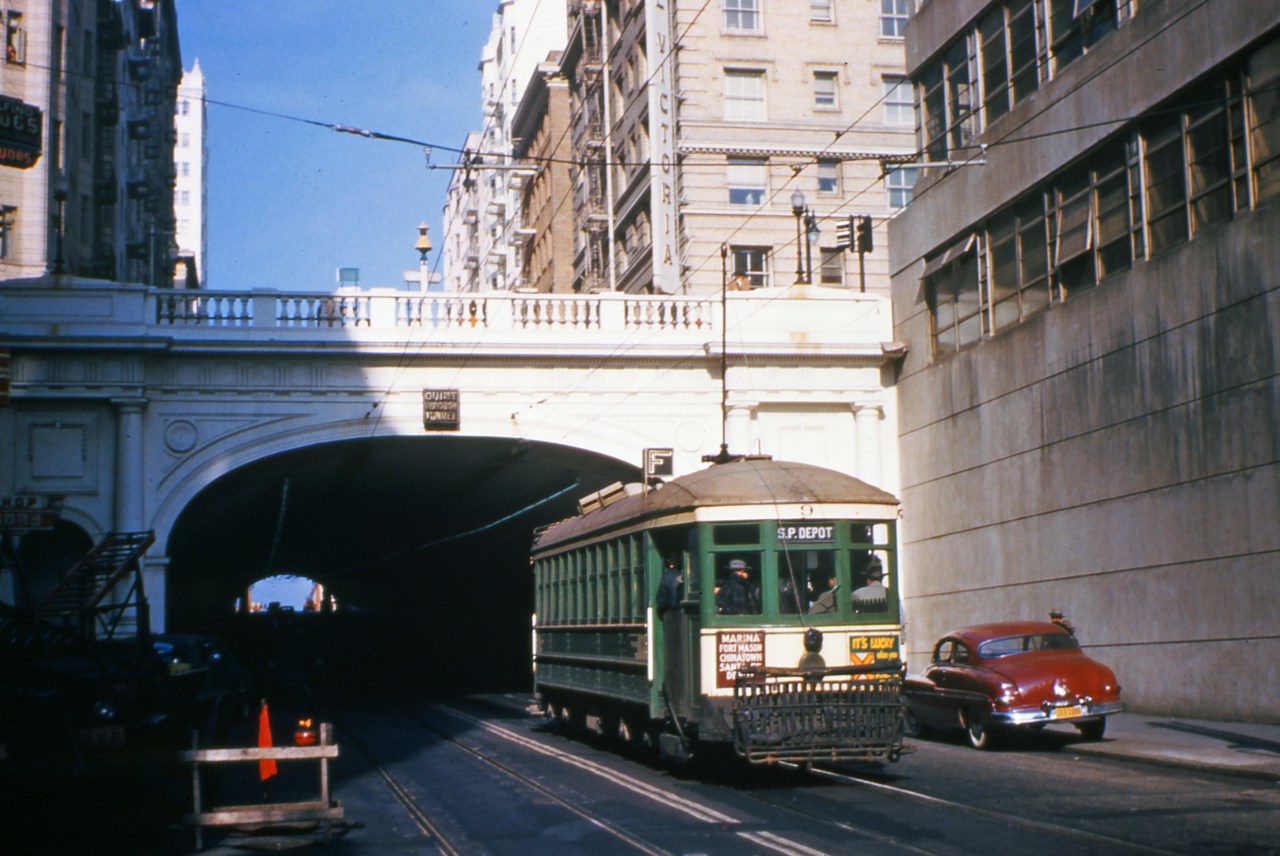
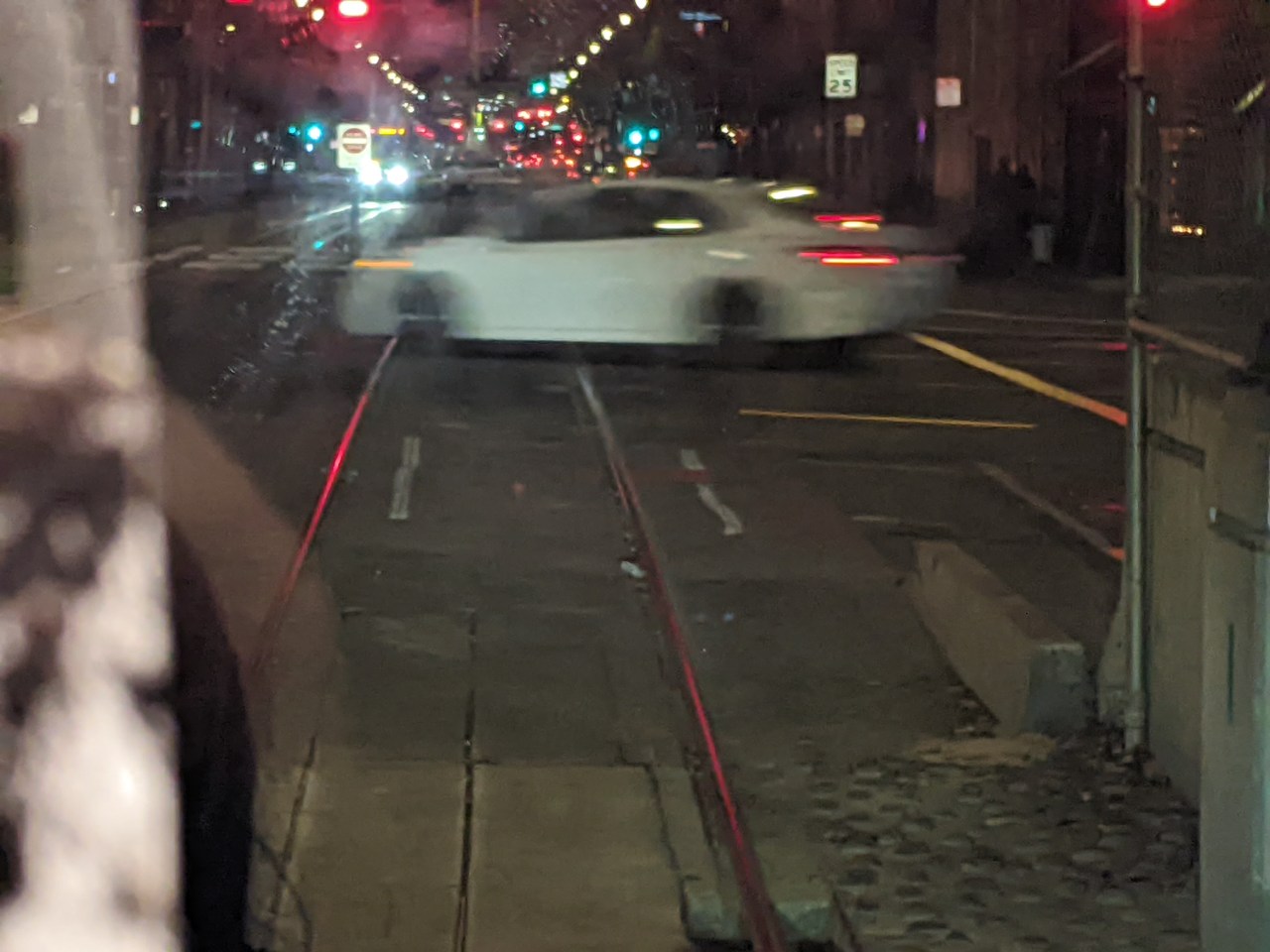
Like, why aren't we still digging and/or laying tracks?
Tell us what observations you took away this weekend. Post your thoughts below. But first, a few pictures for people who may not have seen it yet for themselves:
